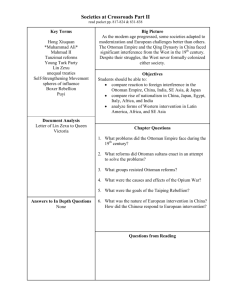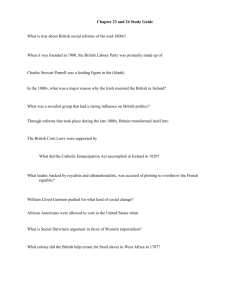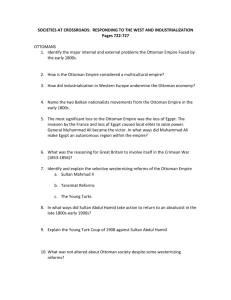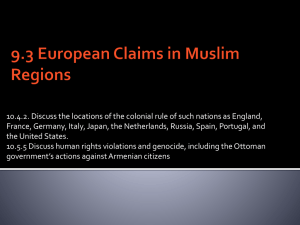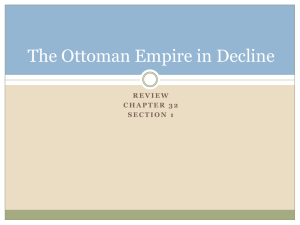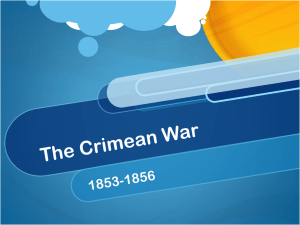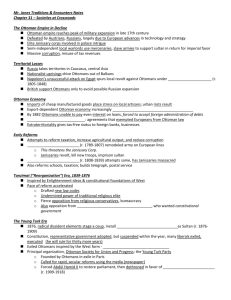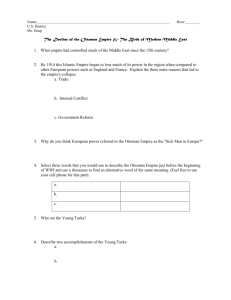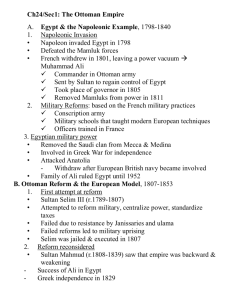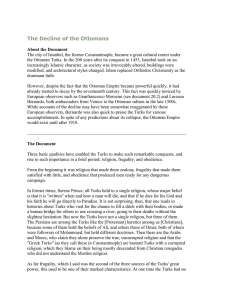Ottoman Empire 18th_20th c
advertisement
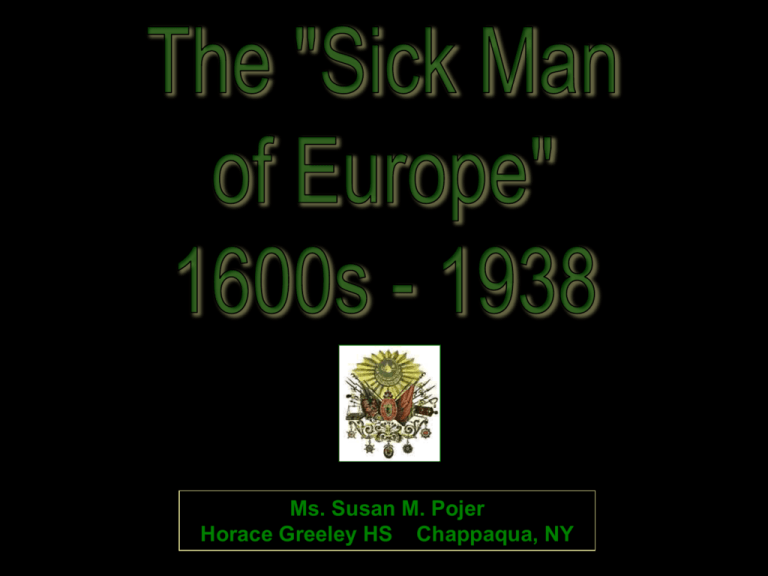
Ms. Susan M. Pojer Horace Greeley HS Chappaqua, NY The Ottoman Empire Expands Topkapi Palace Model The Actual Topkapi Palace Topkapi Harem It’s Good to Be the Sultan! Topkapi “Fruit Room” Topkapi’s Great Craftsmenship The Decline of the Empire: 18c Greek War for Independence: 1821-1832 Crimean War: 1854-1856 The “Sick Man of Europe”! The Ottoman Empire in 1914 Sultan Abdul Hamid II: 1876-1909 The Last Ottoman Emperor! The Young Turks Revolt: 1908 § The Committee of Union and Progress (CUP). § Enver Pasha § Mehmet Talaat Ø Grand Vizier, 1917-1918 Ø Minister of War Ø Ottoman Commanderin-Chief The Young Turks Program § Pushed for reforms ! basic democratic rights: Ø freedom of speech. Ø freedom of assembly. Ø freedom of the press. § Problem of nationalism within (heterogeneous empire). Two Armed Camps Allied Powers: Central Powers: World War I Alliances: 1914-1918 Europeans Carve Up the Ottoman Empire After WW1 Mustafa Kemal Atatürk (1881-1938) § Republican People’s Party Goals: Ø republicanism (National Assembly). Ø nationalism (“Turkification”). Ø populism (for the benefit of the people). Ø statism (state-controlled economy). Ø secularism (free from religious control). Ø reformism. § 1924 ! abolished the caliphate. Atatürk’s Reforms 1. “Turkify” the Islamic faith Ø Translate the Qur’an into Turkish. Ø Secular education. Ø Ministry of Religious Affairs abolished. Ø Sharia courts closed ! new secular courts. 2. Western-style clothing Ø Forbid the wearing of the fez ! Ø Western-style men’s suits. Ø Attacked the veiling of women. Atatürk’s Reforms 3. Language Reform: Ø Roman alphabet replaced the Arabic script. Ø Literacy in new alphabet required for government positions. 4. State Socialism: Ø State banks established to finance government-controlled businesses. 5. Adoption of a Surname.

